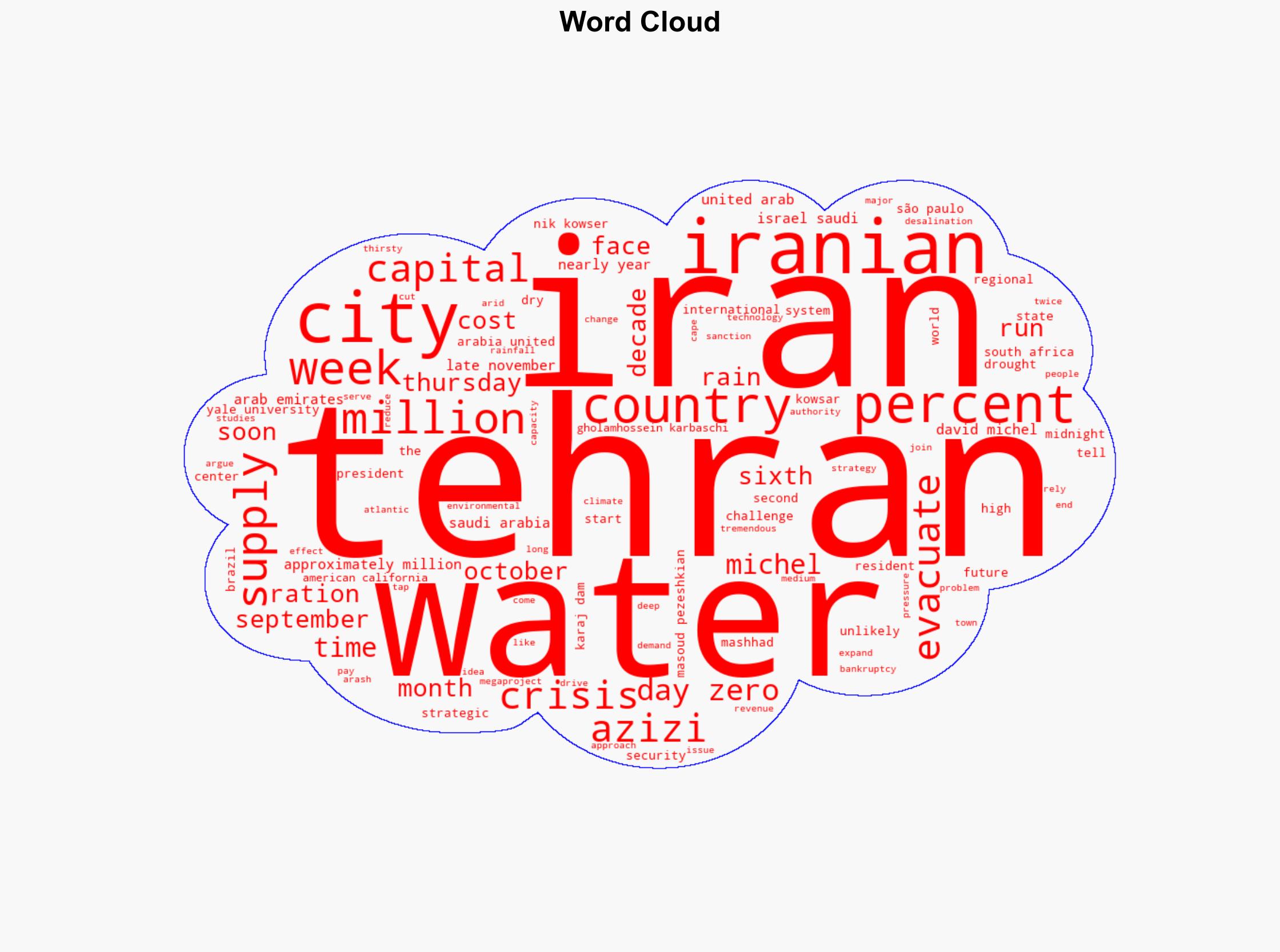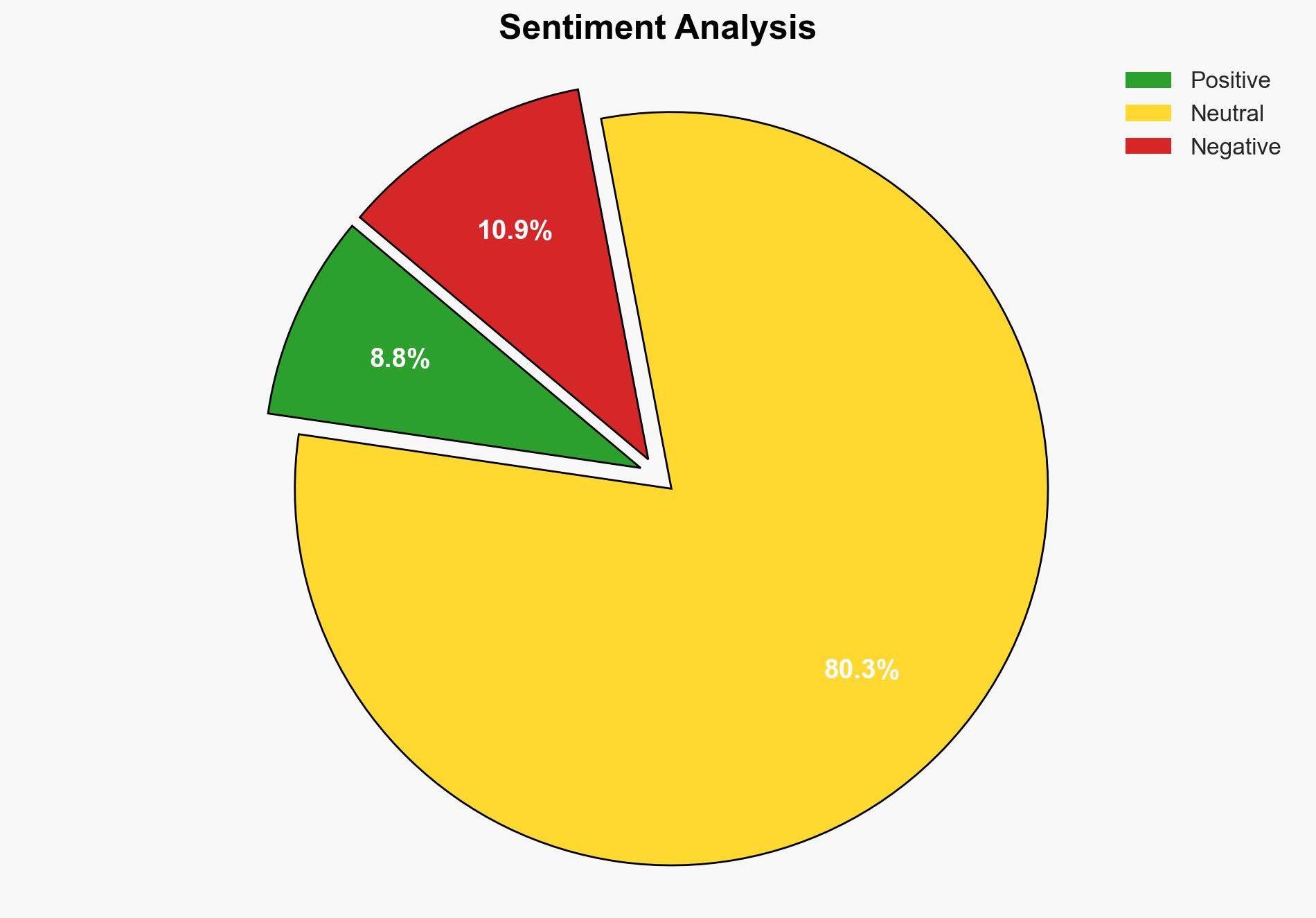Tehrans water crisis is a warning for every thirsty city – Vox
Published on: 2025-11-18
AI-powered OSINT brief from verified open sources. Automated NLP signal extraction with human verification. See our Methodology and Why WorldWideWatchers.
Intelligence Report: Tehran’s Water Crisis
1. BLUF (Bottom Line Up Front)
The most supported hypothesis is that Tehran’s water crisis is primarily a result of mismanagement and environmental factors, compounded by geopolitical isolation. The confidence level is moderate due to uncertainties in regional cooperation and internal policy shifts. Recommended actions include advocating for international collaboration on water management technologies and encouraging regional dialogue to mitigate the crisis.
2. Competing Hypotheses
Hypothesis 1: Tehran’s water crisis is primarily due to environmental factors and climate change, exacerbated by poor water management practices and geopolitical isolation.
Hypothesis 2: The crisis is largely driven by internal mismanagement and corruption, with environmental factors playing a secondary role.
Hypothesis 1 is more likely given the evidence of prolonged droughts, reliance on outdated infrastructure, and the impact of international sanctions limiting access to advanced water technologies. Hypothesis 2 is less supported due to insufficient evidence directly linking corruption as the primary cause, although it may contribute to inefficiencies.
3. Key Assumptions and Red Flags
Assumptions include the continuation of current climate patterns and geopolitical tensions. A red flag is the potential underreporting of internal mismanagement due to state-controlled media. Deception indicators might include overstated environmental impacts to deflect from governance failures.
4. Implications and Strategic Risks
The water crisis poses significant risks, including potential civil unrest, economic decline, and increased geopolitical tensions. A failure to address the crisis could lead to mass migration, exacerbating regional instability. Additionally, the crisis could be leveraged by adversarial states to undermine Iran’s internal stability.
5. Recommendations and Outlook
- Encourage regional cooperation on water management and technology sharing, potentially involving neutral third-party mediators.
- Promote international assistance and investment in sustainable water infrastructure.
- Best-case scenario: Successful regional collaboration leads to improved water management and reduced tensions.
- Worst-case scenario: Continued mismanagement and isolation result in severe humanitarian crises and regional instability.
- Most-likely scenario: Incremental improvements through limited international cooperation, with ongoing challenges due to environmental factors.
6. Key Individuals and Entities
Masoud Pezeshkian, President; Gholamhossein Karbaschi, Tehran Mayor; Nik Kowsar, Water Issue Analyst; Arash Azizi, Historian and Iran Expert.
7. Thematic Tags
Regional Focus, Middle East, Water Crisis, Environmental Challenges, Geopolitical Tensions, Urban Planning
Structured Analytic Techniques Applied
- Causal Layered Analysis (CLA): Analyze events across surface happenings, systems, worldviews, and myths.
- Cross-Impact Simulation: Model ripple effects across neighboring states, conflicts, or economic dependencies.
- Scenario Generation: Explore divergent futures under varying assumptions to identify plausible paths.
- Network Influence Mapping: Map influence relationships to assess actor impact.
Explore more:
Regional Focus Briefs ·
Daily Summary ·
Support us





